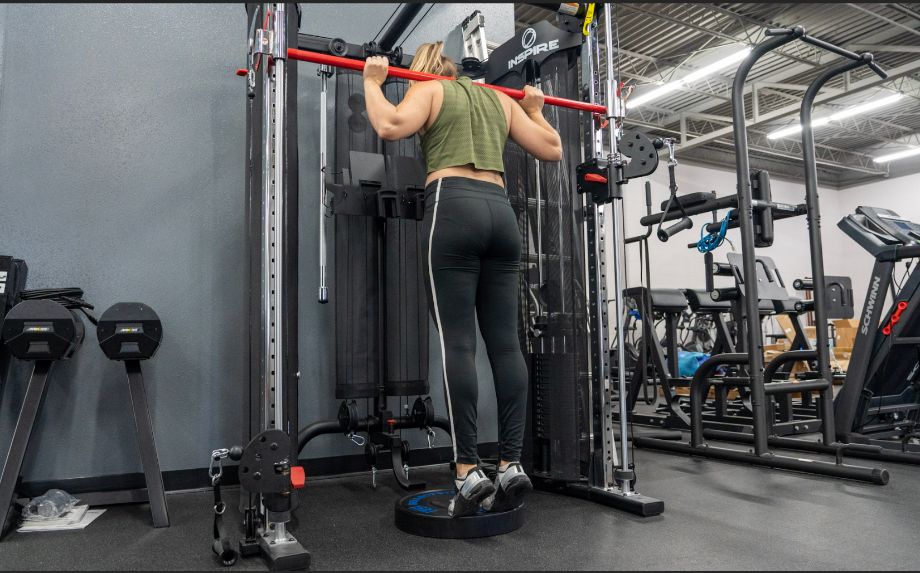We test and review fitness products based on an independent, multi-point methodology. If you use our links to purchase something, we may earn a commission. Read our disclosures.
Your calves are basically the Rodney Dangerfield of leg muscles.
Think about it; leg day workouts are chock full of squats, lunges, and other compound movements designed to target the glutes, quads, and hamstrings, but there’s nary a single calf-specific exercise to target your poor calf muscles.
Your calves deserve more respect!
That’s why we’re listing some of the best calf exercises you can add into your workout routine and sculpt strong calves.
We’re covering the anatomy of this often-overlooked muscle group, the best exercises for targeting them, and answering common questions associated with calf workouts.
It’s calf-time, baby! Let’s get it!
Lower Leg Anatomy
So, what exactly is the calf muscle?
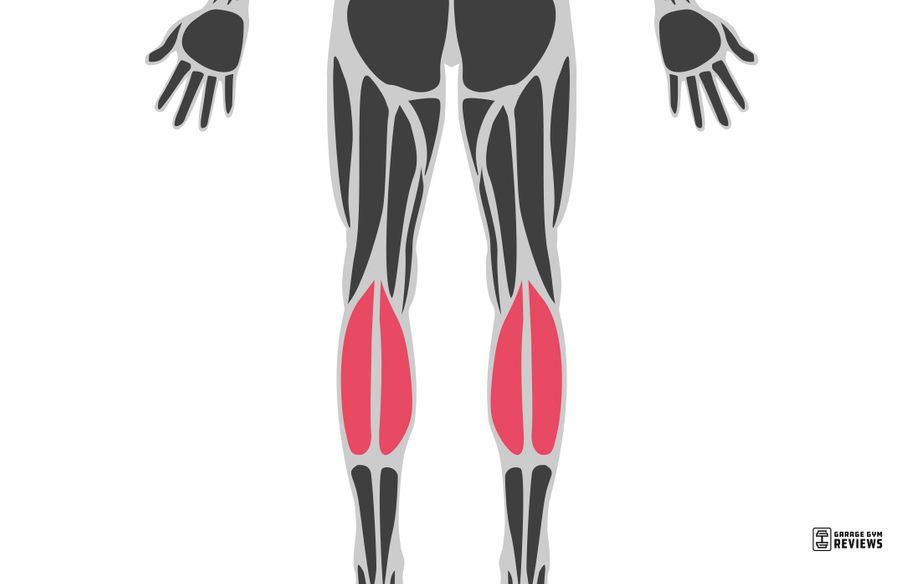
The calf muscles include the gastrocnemius, the soleus, and sometimes the plantaris. We say “sometimes” because studies1 have determined that the plantaris muscle “is completely absent in up to 10% of the population.”
Most calf workouts will target the gastrocnemius and the soleus, which are responsible for plantarflexion, or downward motion, of the foot at the ankle joint. “The gastrocnemius is also key in keeping proper posture and walking form,” says GGR Head of Content and certified personal trainer Kate Meier.
The gastrocnemius really is an unsung hero in regards to leg muscles. In fact, a 2014 review published in Foot and Ankle Clinics2 found it “remarkable in that it has very low energy consumption and very high mechanical efficacy,” specifically regarding its role in promoting proper gait while walking.
Activities like walking, running, and jumping produce muscle activation in the calves, but really you’ll get activation anytime you shift your weight onto the balls of your feet or toes and lift your heels off the ground.
15 Best Calf Exercises
Are you ready to give a little fitness TLC to those commonly neglected calf muscles?
Here are 15 of the best calf exercises to get you started!
1. Basic Calf Raises (Bodyweight)
Why it’s great: Calf raises are simple and effective for building calf strength, ankle stability, and explosive power. Plus, they require no equipment whatsoever, making them easy to do at home.
How to do it:
- Stand with your feet shoulder-width apart.
- Stand up onto your tiptoes, lifting the heels off the floor.
- Pause, then slowly return to the starting position.
- Repeat as needed.
RELATED: Challenging Bodyweight Workouts
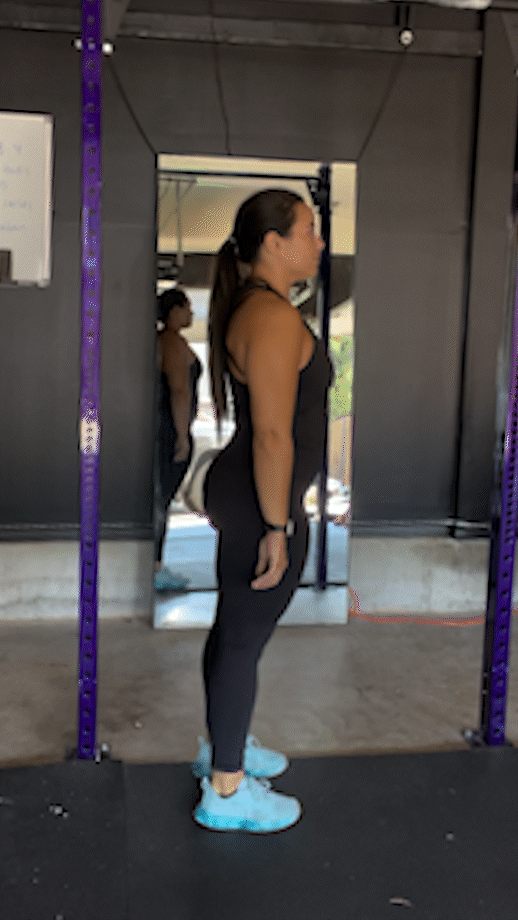
2. Suitcase Calf Raises
Why it’s great: Suitcase calf raises provide plenty of activation in the gastrocnemius and soleus muscles. Plus, the free weights make the movement more impactful while recruiting adjacent muscle groups, including the muscles in the core and the lower back.
How to do it:
- Hold a pair of heavy dumbbells or kettlebells at your side with a neutral grip (palms facing you) as though you’re holding two suitcases.
- Stand up onto your tiptoes, lifting the heels off the floor.
- Pause, then slowly return to the starting position.
- Repeat as needed.
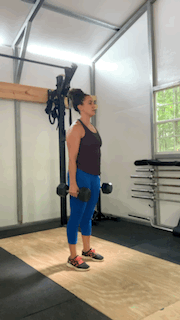
3. Smith Machine Calf Raises
Why it’s great: Using a Smith machine helps you get more oomph from your calf raises, since you’re adding resistance. Plus, it restricts the bar’s movement so you’ll maintain a perfectly straight bar path through the full range of motion.
How to do it:
- Set a Smith machine to the proper height and select the desired weight.
- Stand beneath the bar and un-rack it onto your shoulders. Your starting position should be nearly identical to the back squat.
- Stand up onto your tiptoes, lifting the heels off the floor.
- Pause, then slowly return to the starting position.
- Repeat as needed.
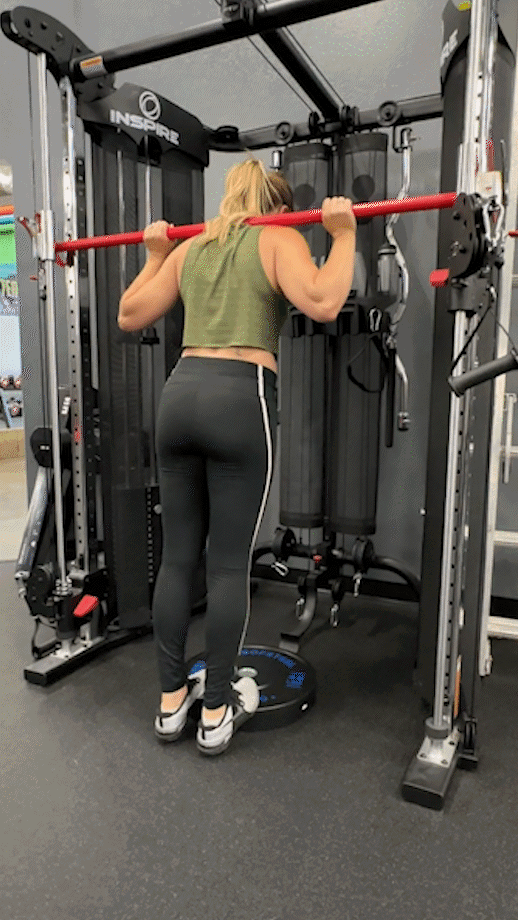
4. Calf Press
Why it’s great: Calf presses are most often performed using a leg press machine. It’s a great modification for those who have a hard time doing calf raises with their own bodyweight.
How to do it:
- Adjust a leg press machine to your specifications and sit down.
- Position your feet close to the bottom of the footplate with your heels near the edge or slightly off the edge.
- Perform the leg press by fully extending your knees and straightening your legs. You may keep a slight bend in the knee to prevent hyperextension.
- Remain in the lockout position, then push the footplate away with your toes.
- You will feel the contraction in the calf muscle. Hold briefly, then release.
- Repeat as needed, then rest.
RELATED: How to Do a Leg Press at Home
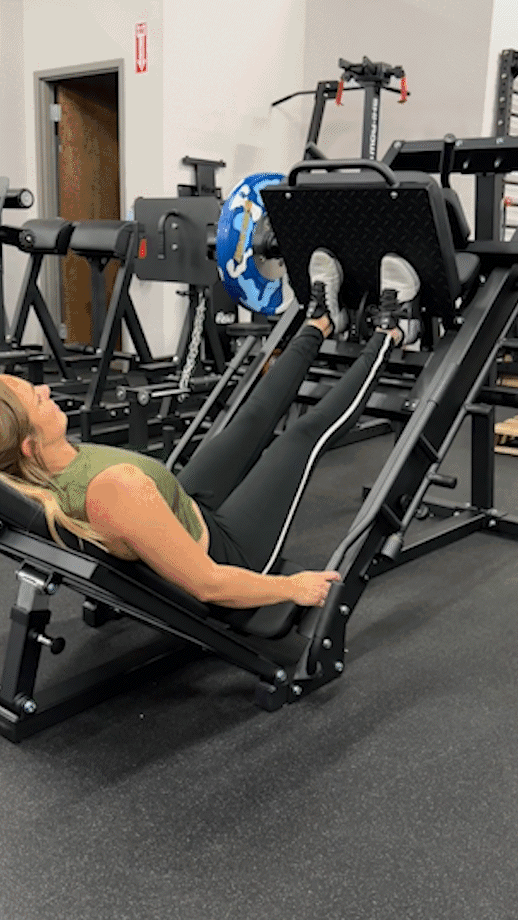
5. Single-Leg Calf Raise
Why it’s great: Unilateral calf raises help correct muscle imbalances, but they’re especially helpful in strengthening the calf muscle after an injury. You can perform them with or without support to modify further.
How to do it:
- Stand with one foot planted and the other raised off the floor.
- Stand up onto your tiptoes with your planted foot. You may support yourself, if necessary, using a countertop, chair back, or anything sturdy.
- Pause, then slowly return to the starting position.
- Repeat as needed.
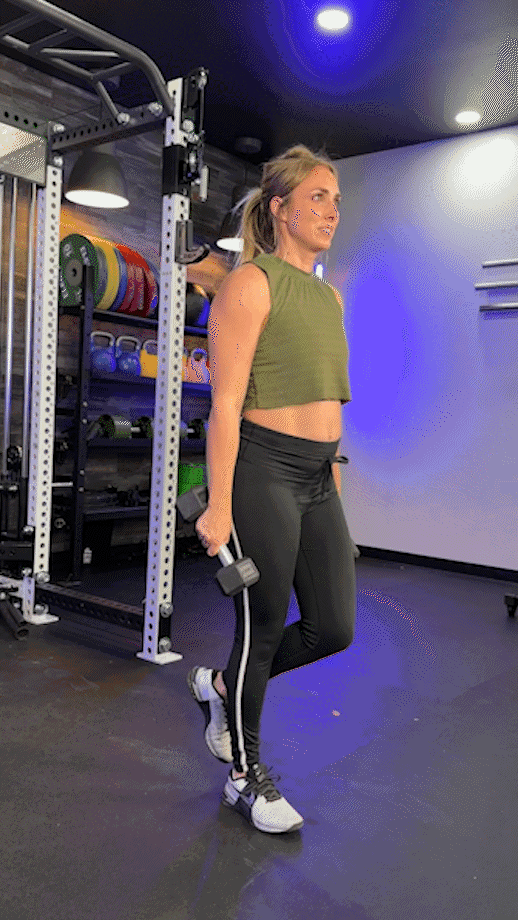
6. Farmers’ Carry on Toes
Why it’s great: Let’s not tiptoe around the truth here; the farmer’s walk is an excellent lower body and core-building exercise. Doing your farmers’ carries on your toes, however, increases the calf activation big time.
How to do it:
- Hold a free weight in each hand at your sides.
- Stand up onto your tip toes and walk forward in a straight line.
- Walk for the desired length or duration, then rest.
RELATED: Farmers’ Walk Benefits
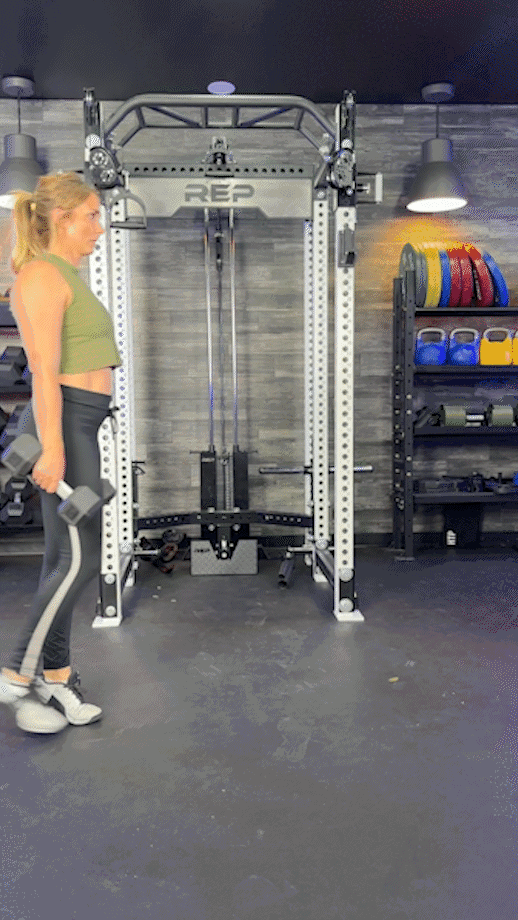
7. Jumping Rope
Why it’s great: Jumping rope is hands down one of the single greatest ways to stay fit. It builds cardio fitness, endurance, coordination, agility, and provides plenty of calf activation to boot. Plus, the best jump ropes are affordable and portable.
How to do it:
- Select an appropriately-sized jump rope. To test, step in the center and pull each end taut alongside your body. The ends of the rope should reach your armpits.
- Hold the handles at your sides and swing it over your head using your hands and wrists.
- Hop over the rope as it passes beneath you.
- Repeat for desired reps or length of time.
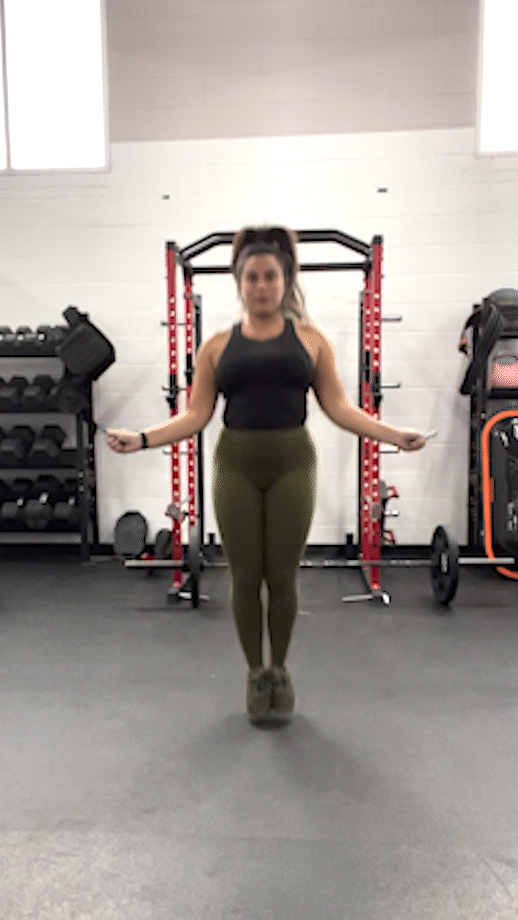
8. Jump Squats
Why it’s great: Jump squats is a high-intensity plyometric exercise that targets multiple lower body muscle groups, helping you build explosive power that enhances your sport performance.
How to do it:
- Stand with your feet hip-width apart.
- Squat until your thighs are roughly parallel with the floor.
- Drive through your heels to explode into a jump.
- Land carefully and cycle into the next rep.
- Repeat as needed.
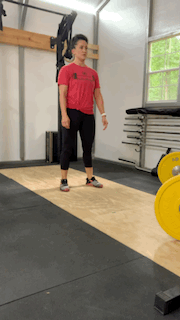
9. Tuck Jumps
Why it’s great: Tuck jumps are similar to the jump squat, but involve tucking your knees into your chest at the peak of your jump. This increases the activation of your core muscles and requires considerably more effort than your regular vanilla jump squat.
How to do it:
- Stand with your feet hip-width apart.
- Bend your knees slightly, then explode into a jump.
- Tuck your knees into your chest at the peak of your jump.
- Land carefully and cycle into the next rep.
- Repeat as needed.
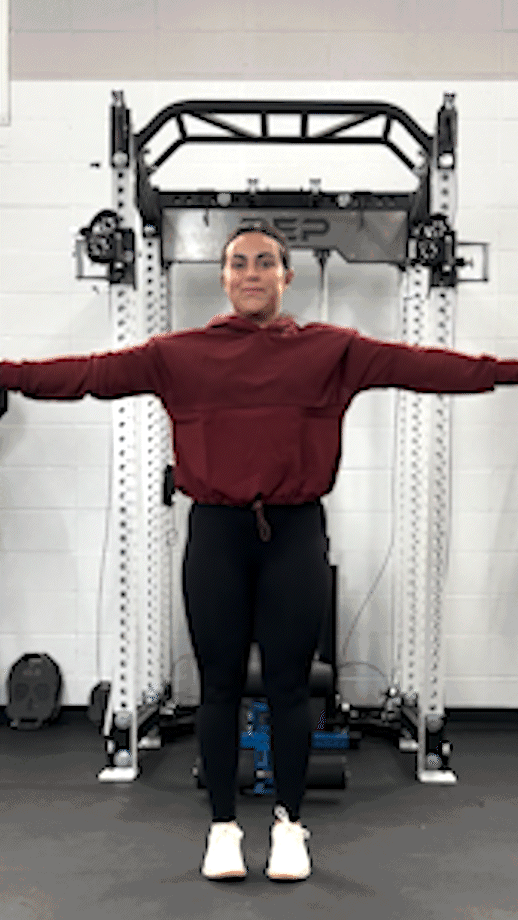
10. Barbell Seated Calf Raise
Why it’s great: Barbell seated calf raises involve the same basic movement as the standard calf raise, but the seated position provides additional activation in the soleus. Plus, the addition of an Olympic barbell helps you progressively overload more easily.
How to do it:
- Place a weight plate on the floor in front of you, then sit down on the end of a bench.
- Rest a barbell horizontally across your lap and place your toes on the edge of the plate.
- Use your calves to raise your heels, lifting the barbell.
- Hold the position, then slowly return to the starting position.
- Repeat as needed.
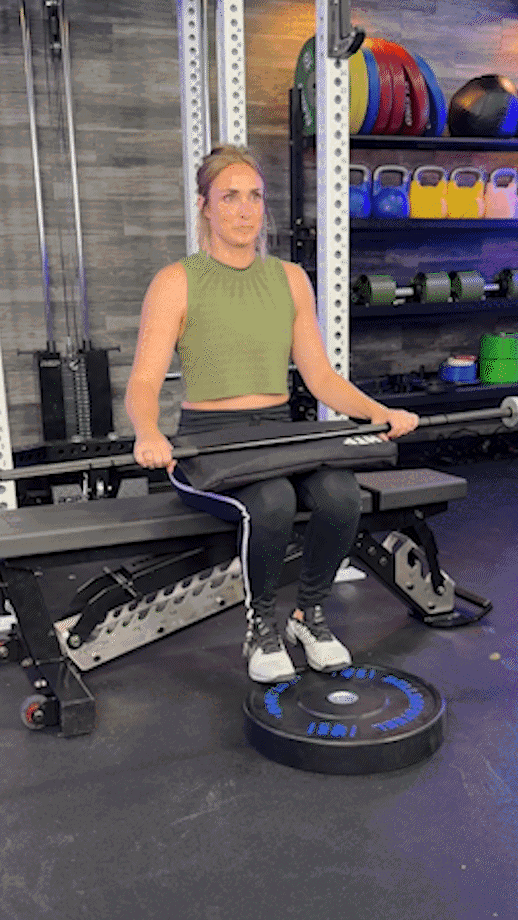
11. Single-Leg Jumping Rope
Why it’s great: Single-leg rope jumps are great for targeting one leg at a time, as well as promoting improved coordination and agility. This kind of jump rope exercise is, however, super hard!
How to do it:
- Grab your jump rope and start jumping as normal.
- Bring your left foot straight up during the exercise while continuing to skip rope with the right foot
- Switch legs and repeat for the desired number of reps or duration.
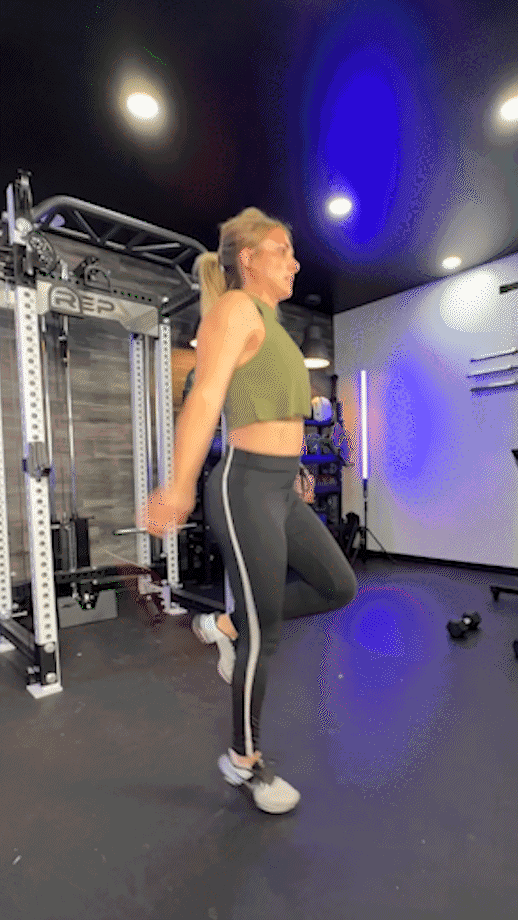
12. Isometric Calf Raise Hold
Why it’s great: A 2021 study published in the International Journal of Sports Medicine4 observed that “isometric plantarflexion holds gave an approximately 50% immediate reduction in Achilles tendon pain,” making them useful for regular calf training as well as physical therapy and rehabilitation purposes.
How to do it:
- Stand with your feet shoulder-width apart.
- Stand up onto your tiptoes, lifting the heels off the floor.
- Hold the position for the desired duration.
RELATED: Isometric Exercises Explained
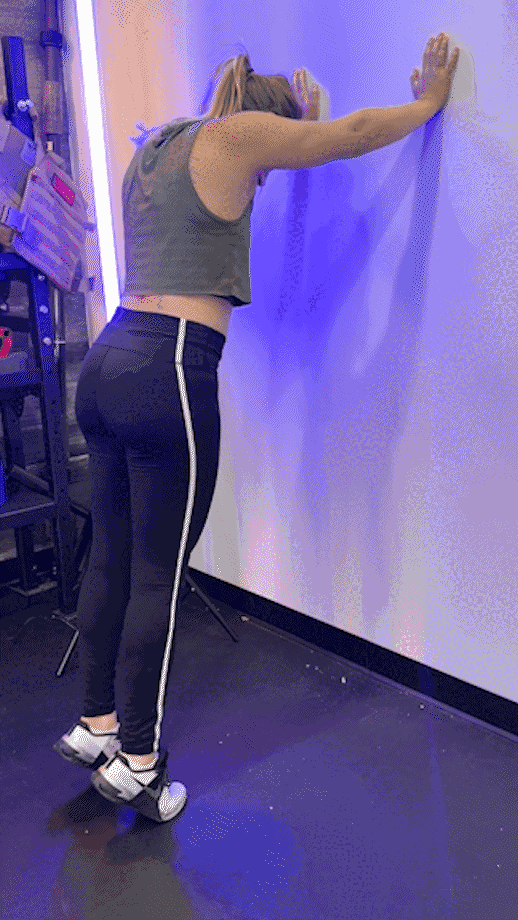
13. Hill Sprints
Why it’s great: If you’re looking to become a better runner, hill sprints will do it for you. Not only will you get calf activation to build bigger, stronger calves, you’ll build muscle in other lower body muscles, burn calories, and increase your VO2 max.
How to do it:
- Find your hill. You may choose a hill in your neighborhood, a sloped section of your favorite trail, or simply set the incline on a treadmill.
- Sprint up the hill or, if using a treadmill, push your pace for the desired interval.
- Rest as needed, then repeat.
RELATED: Hill Training Tips and Tricks
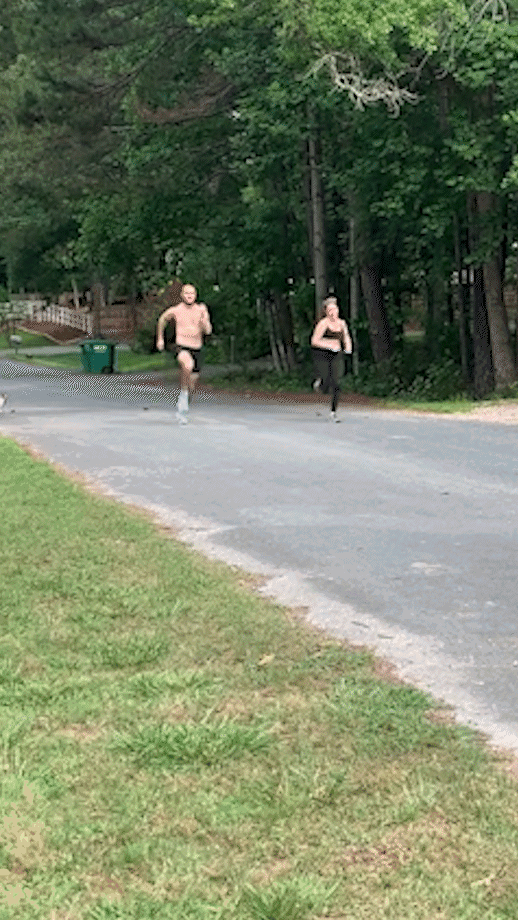
14. Climbing Stairs (Stair Climber)
Why it’s great: Climbing stairs is excellent for your all-around fitness, but your calves get a lot of activation every time you push off a step with your toes and step up to the next one. You can use one of the best stair climber machines, or just find a set of steps and go!
How to do it:
- If you’re using a real staircase, find a good, long one and start climbing!
- If you’re using a stair climber, set it to a comfortable but challenging pace and climb for the desired duration, resting as needed.
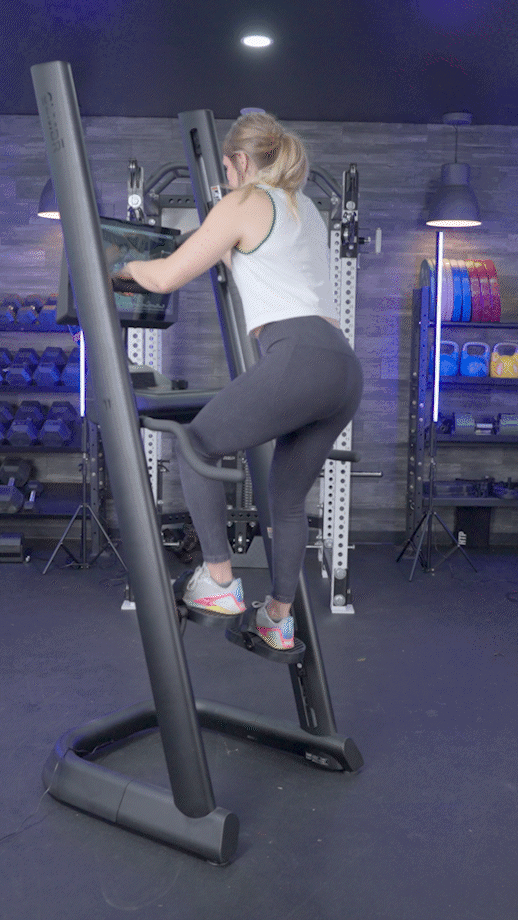
15. Box Jumps
Why it’s great: Box jumps provide great calf activation while burning calories and building cardiovascular endurance. It’s an all-around great addition to just about any workout!
How to do it:
- Grab a plyo box, or something else sturdy, and stand in front of it.
- Bend your knees slightly, then explode off of the floor and jump onto the box.
- Once you’ve planted your feet on the box, fully extend your hips to stand up tall.
- Hop or step down off the box.
- Repeat as needed.
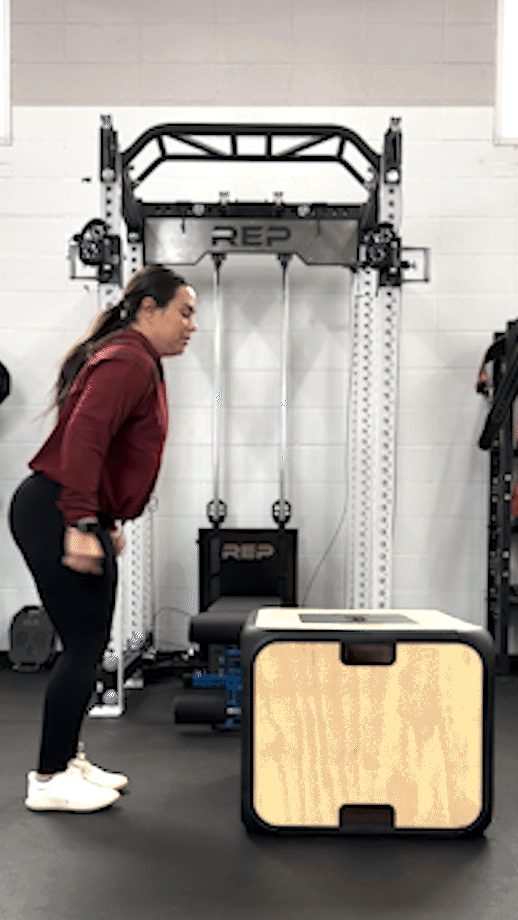
Final Thoughts: Calf Exercises
You don’t have to look hard to find a fitness enthusiast performing a set of back squats, deadlifts, or lunges to build lower body strength, but calf-specific exercises are a gym rarity.
However, training the gastrocnemius muscle and its compatriot, the soleus, helps enhance athletic performance, facilitate everyday activities like walking, and promote better overall fitness.
Try working a handful of our calf exercises into your next leg workout, and give those calves the time and attention they deserve!
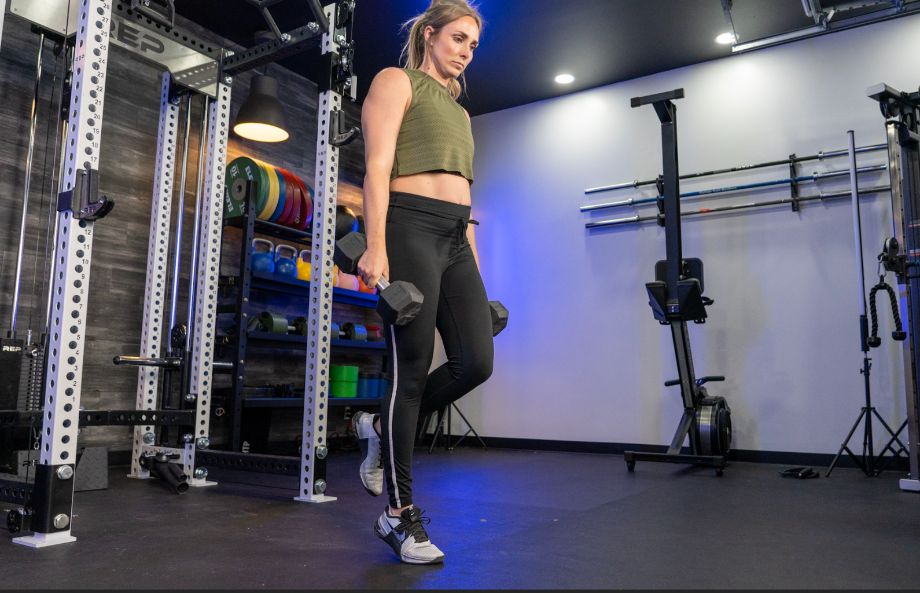
FAQs: Calf Exercises
How can I get big calves?
Building bigger calf muscles requires regular strength training using targeted leg exercises and progressive overload, while also getting adequate rest between sessions and eating a well-balanced diet to support hypertrophy.
But isn’t there anything we can do to get results faster?
Actually, yes. There may be.
According to a 2020 study published in the Journal of Strength and Conditioning Research5, foot placement played a role in hypertrophy, specifically the location, over the course of a 9-week calf training regimen.
Researchers noted that pointing the foot outward “potentiated the increases in [muscle thickness] of the medial gastrocnemius head, whereas [foot pointed inward] provided greater gains for the lateral gastrocnemius head.”
RELATED: How Many Reps To Build Muscle
Can I work out calves every day?
Repeatedly targeting your calf muscles is less likely to fast-track your results and more likely going to leave you sore and at risk of injury.
Instead of hitting the same muscle group every day, give your muscle fibers time to recover fully, usually about forty-eight hours. In the meantime, try targeting other muscle groups, perform active recovery, or take a true rest day and kick back for a change.
You’ve probably earned it!
RELATED: The Science Of Post-Workout Recovery
What is the best calf exercise?
What exercise works best for you will depend on your current fitness level and personal fitness goals, but there are some staples that should earn a mainstay in your regular calf workout routine.
Standing calf raises, seated calf raises, and box jumps are great all-purpose exercise, while jumping rope is excellent for overall fitness and hill sprints are very good for runners specifically.
Does walking make calves bigger?
Theoretically, walking can contribute to increasing calf strength and size, but, like “The Dewey Cox Story,” you’d really have to “walk hard.”
Just as you would to build muscle in other muscle groups, progressively overloading the muscle using traditional resistance training is likely the best way to pursue this goal.
For personalized advice, consider working with a personal trainer or other qualified professional.
References
1. Binstead JT, Munjal A, Varacallo M. Anatomy, Bony Pelvis and Lower Limb: Calf. [Updated 2022 May 29]. In: StatPearls [Internet]. Treasure Island (FL): StatPearls Publishing; 2023 Jan
2. Cazeau C, Stiglitz Y. Effects of gastrocnemius tightness on forefoot during gait. Foot Ankle Clin. 2014;19(4):649-657. doi:10.1016/j.fcl.2014.08.003
3. Bradford B, Rio E, Murphy M, et al. Immediate Effects of two Isometric Calf Muscle Exercises on Mid-portion Achilles Tendon Pain. Int J Sports Med. 2021;42(12):1122-1127. doi:10.1055/a-1398-5501
4. Nunes JP, Costa BDV, Kassiano W, et al. Different Foot Positioning During Calf Training to Induce Portion-Specific Gastrocnemius Muscle Hypertrophy. J Strength Cond Res. 2020;34(8):2347-2351. doi:10.1519/JSC.0000000000003674
Further reading

Finding the best pre-workout for men among hundreds of products on the market wasn’t easy, but we did it. Check out our top picks. Read more

The dumbbell snatch is a beginner-friendly version of the barbell snatch, and works every muscle group in the body. Here’s how to do it with proper form. Read more

The Kabuki Strength New Generation Power Baris the best power bar we've tested to date. Everything from the knurling to the tensile strength of the steel is superior to other power bars we've reviewed including our previous favorite, the Rogue Ohio Power Bar. If you're looking for the best bar for powerlifting specific training and are willing to spend money to get it, this is the bar we recommend. Read more

Looking for expert tips on how to do the back squat properly? You’re in the right place! We'll also break down the benefits, common mistakes, and variations. Read more

